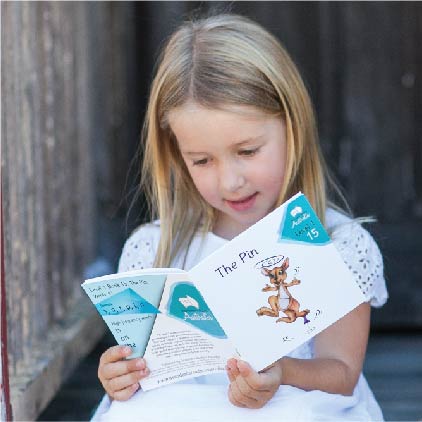The Strugglers Among Us

Here in Australia the school year is a few weeks in and teachers have been busily getting to know their new students. As part of this process, it is customary to spend some time learning to understand the needs of our students with additional needs. We meet with parents, review files and familiarise ourselves with individual education plans. But what of the students who don’t have a diagnosis, individual education plan or record of ongoing additional needs? How do we identify and support them?

Identifying students who do not have a diagnosis
Talk with parents
- If you have concerns or questions about a student, your first port of call is a conversation with parents. Don’t say, “I think your child has a problem”. Instead, ask, “Have previous teachers talked with you about the challenge that ____ has with _____?”
- Examine your existing classroom data.
Start by looking for the students who aren’t performing well in regular classroom assessment. Even though benchmark assessments aren’t a great way to measure reading skill (and may even mask reading difficulty in some children), if that is what you have, start with that. Once you have had the opportunity do some of your own initial assessment (phonics, phonemic awareness), you can use that to identify students who have gaps in their skill and knowledge.
- Spend time with students listening to them read.
Make it your mission to listen to all of your students read regularly. This can be challenging, but if you utilise your after lunch quiet reading time and only listen to children reading short snippets instead of an entire text you will be able to make it through your whole class quite quickly. Remember, the point of this is not to ask comprehension questions and have a conversation about the text, but simply to get an impression of how the child is tackling decoding. You can examine text comprehension in class level activities.
- Examine their writing and spelling.
A student’s spelling gives you a very quick insight into their level of knowledge of the alphabetic code. While not a definitive result, writing can provide an indication of challenges.
- Talk with the person who manages NCCD in your school.
It is possible that students may have been included in the school’s NCCD (Nationally consistent collection of data about school students with a disability) data collection without a diagnosis. If this is the case, evidence would have been collected including assessment, work samples and evidence of adjustment.

What Reading Behaviours Might Tell You
When you listen to a student read and identify that they may have some challenges, the behaviours may well fall into one of three categories
- Behaviours that have been taught
If the student looks the first letter and then looks at the picture, if they skip words or make wild guesses, they might have been taught to this as part of a balance literacy approach to reading instruction. Without explicit instruction to address these inefficient strategies, these behaviours could very well become a reading difficulty over time.
- Behaviours that impact reading but indicate lack of strategy rather than a difficulty.
Tripping over multisyllable words, not quite reading all through the word, being unfamiliar with less common graphemes or not attending to punctuation are all reading behaviours that indicate a gap in instruction. With focused attention on developing skills and knowledge, you will be able to support the student to develop more efficient skills.
- Behaviours that are red flags for a reading difficulty
Difficulty sounding out even simple words, challenges that persist despite strong instruction over time, significant difficulty reading unfamiliar words and general challenges with memory and retrieval are all indications of a significant reading difficulty.

Image courtesy of Decodable Readers Australia
What to do when you identify a student with a reading difficulty
The first thing to do when you identify a student with a reading difficulty is to talk with the student’s parents or guardian. This can be a sensitive conversation so don’t hesitate to reach out to your school’s student support team for help.
As a classroom teacher, you don’t have to wait for diagnosis in order to help children. Gather some very specific data to identify ‘gaps’ in student knowledge and skill and put a plan together to specifically address those gaps. It’s great if you have one, but you don’t need a fancy intervention program to do this. If your assessment has shown that the student has a bunch of graphemes that they don’t know, start there. If they find multisyllable words tricky, provide extra practice in prefixes and suffixes. If the student isn’t automatic with short vowels, support them to practice them so that they can learn to quickly blend CVCs.
Your assessment doesn’t need to be a norm referenced, standardised test. Simply showing grapheme cards to the student and noting which they know and which they don’t can get you started on the road to support. The same goes for phonemic awareness. Ask your student to perform particular skills and note which they need extra support for.
Finding time for all that extra teaching and practice can be challenging, but it is not impossible. I have seen teachers do a marvellous job of supporting their struggling readers with very little support. Here are some suggestions for way to carve out precious minutes:
- Grab your student for 5 minutes before school and review grapheme and words
- Repurpose time that might otherwise be spent on less effective things like sight word practice
- Instead of asking an education assistant to read with the student, have them practice sounds and word level reading.
- Review homework and send home grapheme and word cards to practice. This emphasis on grapheme and word level reading is an indication of how important automaticity at these levels is.
- Utilise your after lunch reading time as review and practice time for everyone. Give each child a pencil case with small grapheme and word cards to practice either individually or with a partner before spending time with their choice of books. Work with your strugglers first, every day.
- Instead of ‘guided reading’ using levelled texts, provide extra practice for phonics and decoding and use decodable texts to build confidence and strong decoding skills.

Image courtesy of Phonics Books
Once we know what to look for, it isn’t hard to spot the strugglers amongst us. We also don’t need to get bogged down in highly complex systems and strategies to help them. Simply responding to the gaps identified in assessment and focusing on building basics, one thing at a time until mastery is achieved will go a very long way indeed.
I am pleased to announce that my Supporting Struggling Readers Teach Along has recently been released as a self-paced, on demand course. You can now access this 6 module Teach Along without waiting! To find out more click here.


 Jocelyn Seamer Education
Jocelyn Seamer Education
0 comments
Leave a comment